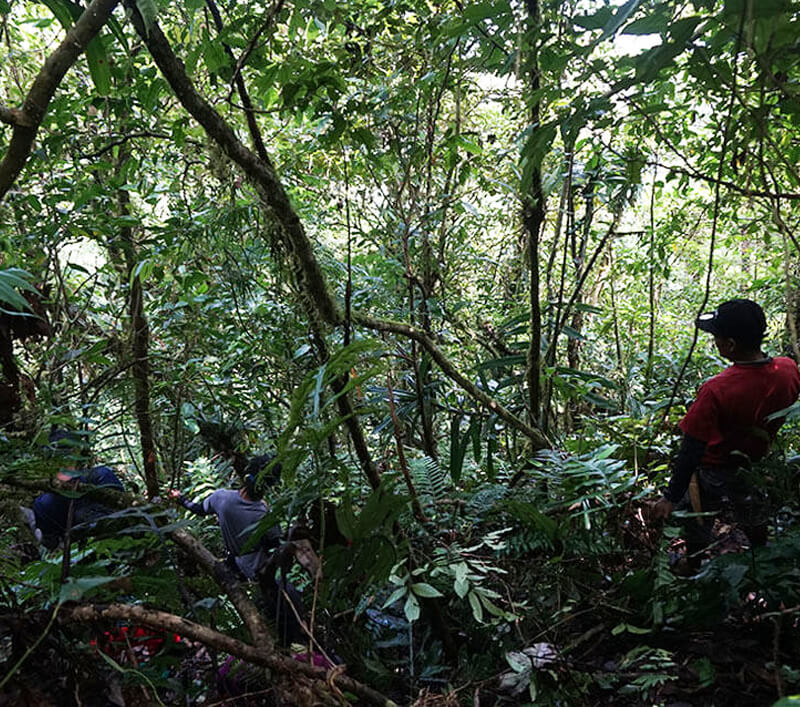Mindoro island is considered as a distinct biogeographic region housing some unique flora and fauna. In fact, it is home to the very rare species of Bleeding Heart Pigeon and the critically endangered Tamaraw. To conserve these biological species, selected areas in the province are protected under the National Integrated Protected Areas System (NIPAS) Act of 1992(which is now recently amended by RA No. 11038 also known as the ENIPAS Act). These areas include the Apo Reef Natural Park, Mt. Calavite Wildlife Sanctuary and FB Harrison, Mts. Iglit-Baco, and Naujan Lake National Park.
The island of Mindoro is also a host to Mangyan indigenous peoples, which is composed of the following eight sub-tribes: Iraya, Alangan, Tadyawan, Tau-buid, Bangon, Bhuid, Hanunuo, and Ratagnon. Each subgroup has its own language, set of customs, and way of life. Mangyans practice swidden farming and the most well documented practice is amongst the Hanunuo. Studies on the Hanunuo’s swidden farming revealed that such practice has prevented land deterioration in spite of the fact that forest land degradation is now evident in their territory due to various factors such as pressures on land from migrants occupying the fringes of their domains (Atsuko, 1995).
It is, however, an unfortunate fact, that forest activities and livelihood factors constantly modified the forests of Mindoro and what drives these elements to continue are high poverty levels, low employment opportunities, insecure tenure rights, low institutional capacity (poor funding, low staffing levels, lack of reliable transport for monitoring and lack of synergy among the various policies and acts of legislation.
The Mindoro Forest and Biodiversity Conservation Programme is a multi-stakeholder project that aims to mitigate deforestation in primary and secondary forests in Mindoro while conserving High Conservation Value areas and enhancing livelihood opportunities for stakeholder communities.. It is a comprehensive conservation project being executed by Center for Conservation Innovations Ph to utilize carbon funding provided by a REDD+ project to make necessary investments in job creation and income generation activities in order to sustain financial stability into the foreseeable future. The Project has initially executed carbon right trainings in the Project Area for landowners to realize the value of their carbon. It is our intention to access these credits to ensure the benefits extend indefinitely into the future.
The primary stakeholder communities are three indigenous tribes which together constitute the Mangyan people: the Iraya tribe of Oriental Province, the Alangan of Occidental Province, the Tau-buid of Occidental Province. Other stakeholders include the provincial government, local government units, non-government organizations, people’s organizations, indigenous people organizations, and the mining community in Mindoro.
It is composed of three phases. CCI PH, together with its partners, is already done with its Phase 1 which includes a GHG emission baseline assessment, forest carbon stock inventory and baseline assessment, socio-economic baseline assessment, opportunity cost analysis, tenure and resource use rights assessment, financial and economic assessment. Outputs for this phase also included updated forest and biodiversity baselines, updated forest cover change, and updated species distribution models.
Through these initial activities, CCI PH was able to support local and national management authority in determining conservation targets and goals towards the recovery of lost natural habitats, hindering forest loss, and the improvement of livelihood. Currently, the program is implementing Phase 2 which involves the institutionalization of the governance system at the site level with the local stakeholders that will be engaged in the delivery of the project outcomes. The activities in this phase include the delivery of the prevention of deforestation through patrolling, monitoring, restoration and rehabilitation of degraded forest areas. Capacity-building of partners such as QGIS trainings, species identifications, and biodiversity assessment techniques are conducted as well.
CCI PH is also setting up sustainable livelihood for the stakeholders as an alternative . The IPs are also supported by identifying potential market for their produce. Lastly, phase 3 will undertake the development of monitoring, reporting and verification system of sites wherein forest (including mangroves) and species monitoring tools will be developed and utilized by stakeholders.

